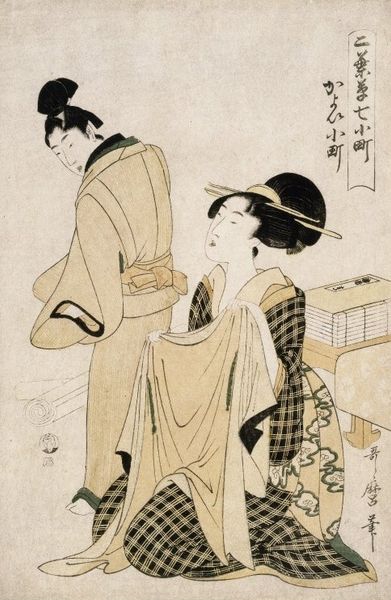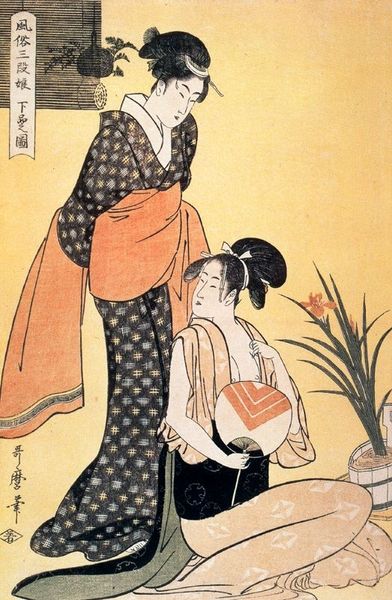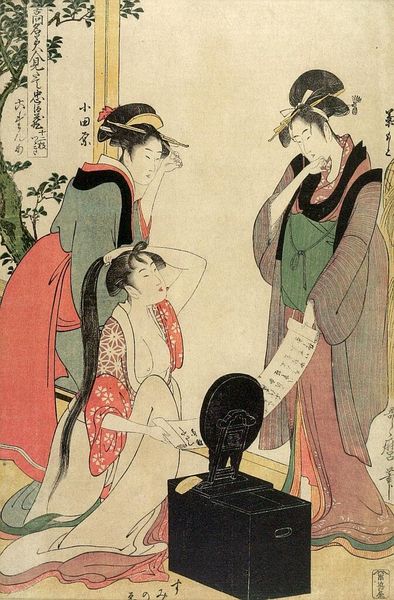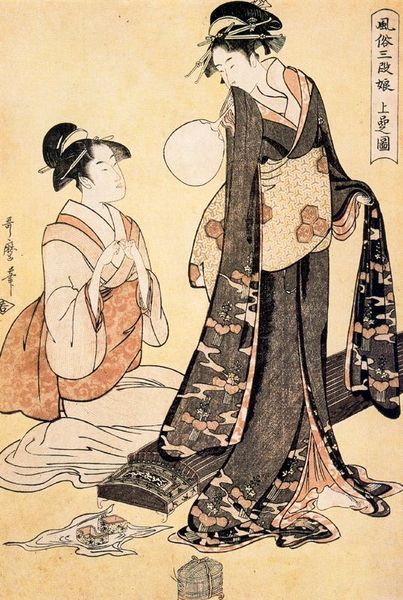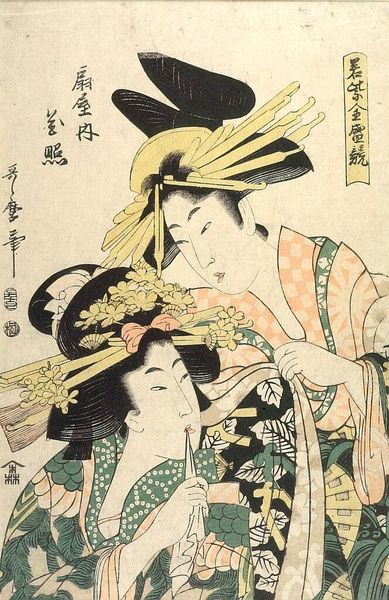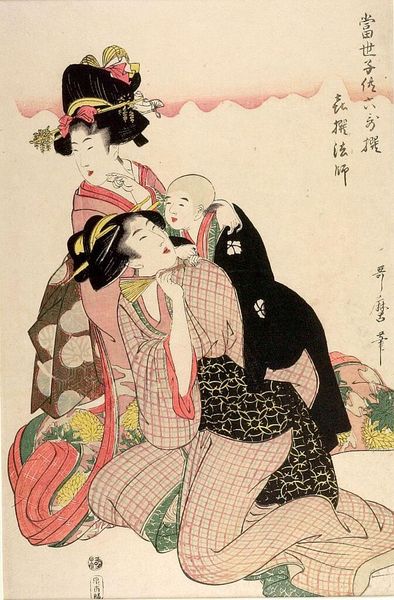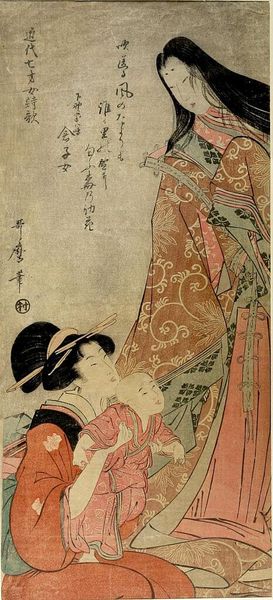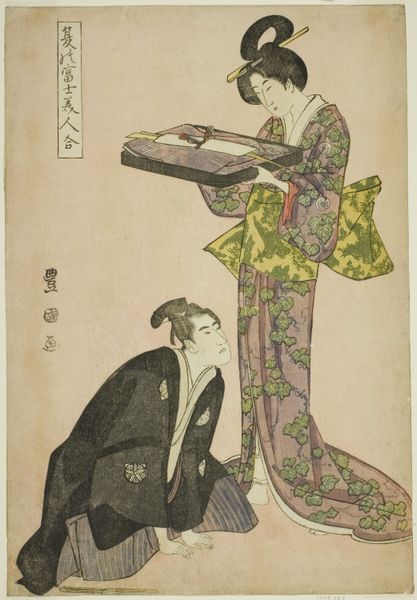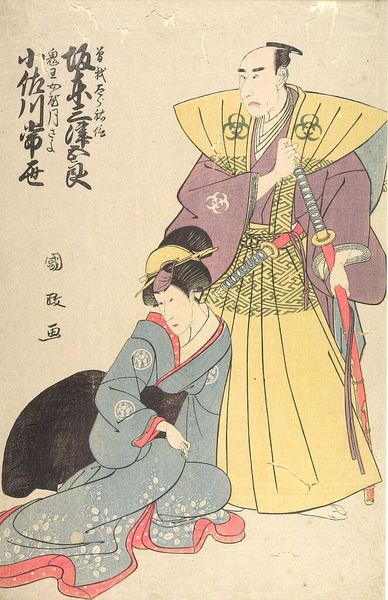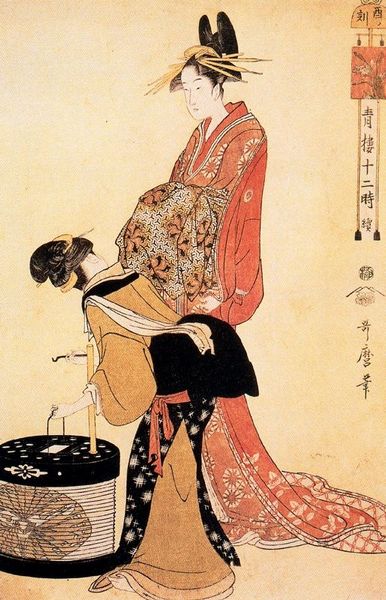
print, woodblock-print
#
portrait
# print
#
asian-art
#
ukiyo-e
#
woodblock-print
#
genre-painting
Copyright: Public domain
Curator: At first glance, I see such an intriguing composition. The positioning of these figures and the subtle colors… It’s almost dreamlike. Editor: Well, let's dive in. This is a woodblock print, a Ukiyo-e piece by Kitagawa Utamaro titled "The Hour of the Hare." We don’t have a specific date for this one, but it gives us insight into the period’s artistic sensibilities. The method itself, how Utamaro used woodblocks to create those layered colors, that's the core of its appeal. Curator: Ukiyo-e prints always feel so connected to their moment. And knowing that this print was made to be disseminated fairly widely speaks volumes about access to art and culture. Editor: Exactly. Prints allowed art to circulate outside the traditionally elite spheres. Also, Utamaro's work gives visibility to women's labor and artistic contribution, right? The detail in their garments indicates textile production practices and social identities. These aren't just aesthetic objects; they're pieces of a socio-economic fabric. Curator: Speaking of textiles, the contrast between the flat background and intricate patterns on their kimono is quite striking. It creates such a sense of depth, which adds to the overall mood. I can't help but consider what the setting could possibly be… The gestures… Editor: We are presented with women engaged in their daily activities and pastimes, reflecting urban culture during the Edo period. Now, what really fascinates me is thinking about the consumption of such imagery. These prints, like magazines today, influenced taste, fashion, and public perceptions. Curator: It is an extremely intimate encounter. In all senses! What I keep thinking about are the materials of production; not just the physical materials of the artwork but also the cultural resources and social context involved in producing an image of these women for an audience that was primarily elite and male. The artistic and physical labor it required... fascinating. Editor: Ultimately, what we glean from Utamaro's work here isn’t merely about surface appearance, but a deeper understanding of how cultural expressions are embedded in socio-political and economic dynamics. Curator: Agreed. The social function, production, and audience… it’s the synthesis that makes this artwork so significant.
Comments
No comments
Be the first to comment and join the conversation on the ultimate creative platform.

